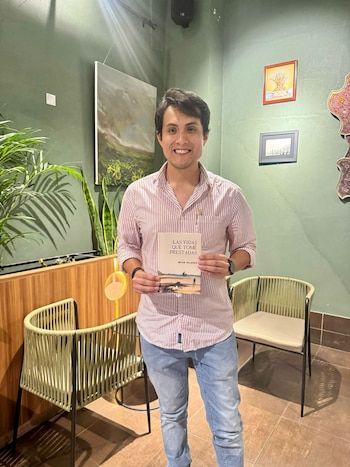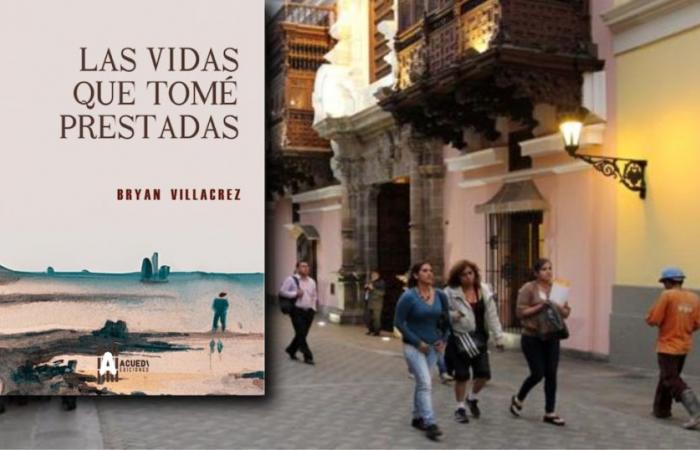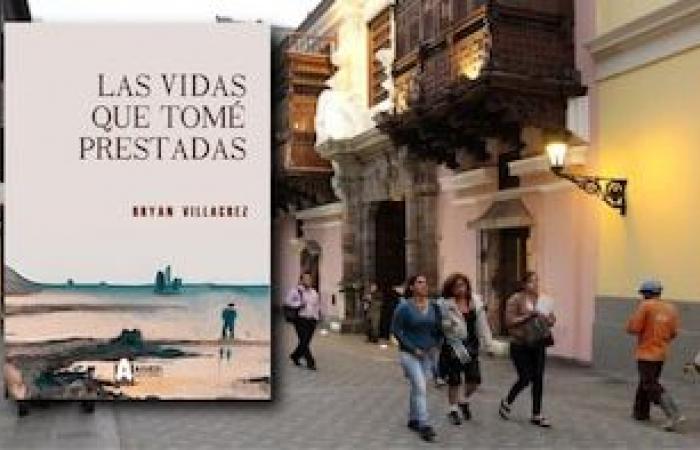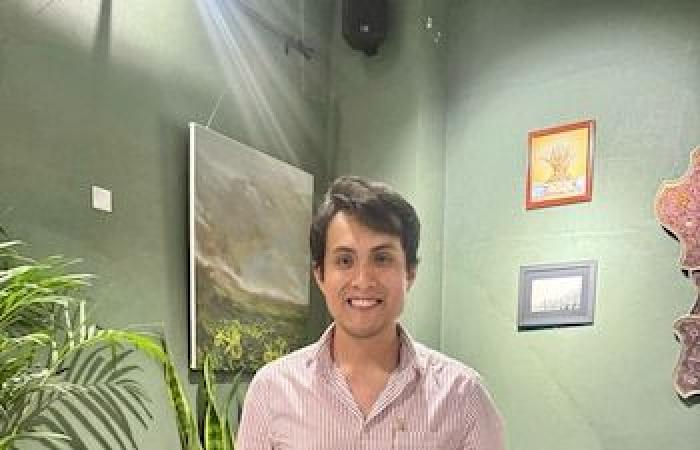The city advances with tired steps. In its streets, Each face carries a story not countedan unfinished scene. A man sleeps next to a whereabouts, two friends reunite after years, a child observes how his grandfather’s life goes out slowly. In the middle of those anonymous passages, Bryan Villacrez writes. He does not seek happy or moral endings, but moments arrested over time, shaken by the unexpected. His book, ‘The lives I took ‘it is not presented as an anthology of stories, but as a kaleidoscope of stories that collect, from fiction, truths deeper than those of any chronicle.
From the cover to the last story, the book is positioned in an uncertain field, Between the fantastic and the everyday. Villacrez chooses characters that walk outside, whose decisions – sometimes very – push them to a breakdown. It is not about heroes or martyrs, but common people who face the inevitable: The passage of time, death, loss, doubt, faith, oblivion. The author states that, in these stories, “fate manifests itself as that moment in which you have to make a decision that can change your life.”
From teaching and his experience in communication, he has been exploring the social dimension of the word for years. His literary blog Mar in the background became a space for constant exchange, but it was with this first book that his stories took body. “Not everything is fiction,” he admits. “One spreads in his past, in situations he has lived or told him. That’s what it is also: to take the lives of others to be able to capture them.”
In conversation with Infobae Peruthe writer shared the foundations of his writing, his thematic obsessions and the urgency of telling what is often not said.

when asked about the role of destiny in his work, Bryan responds bluntly: “Yes, I think there is a purpose. It is not simply chance, it is not like throwing the dice and accepting what it touched you. I always try to think about What decisions I can take to turn my life”.
In The lives I borrowedeach story seems to turn on that point. In The unwavering promisetwo friends have alive an emotional debt since the 50s. The power of whatthe protagonist faces his own mind, the possibility of not being able to continue. They are stories where an election or meeting transforms the logic of the days.
This structure does not respond to a pre -established formula, but to the way Villacrez builds its stories. “I collect anecdotes, both mine and others. Sometimes I am in a bar with friends, as in In the shadow of the poetand observe around me. As a journalist, you realize unique characters, people with a Special essence that seem out of a book”.
One of the most representative stories of the book is The vagabonda text that poses a direct social criticism without the need for pamphlets or explicit statements. “We have all crossed with someone in a street situation,” explains the author. “These stories are made so that the reader is recognized or placed in the characters skin. They talk about things that happen all the time. ”
Far from looking for extraordinary characters, he concentrates on the human. In anguish, in fatigue, in silences. “There is the anguish of the times in which we live, individualism and human emptiness; as well as insecurity,” he explains. “Each era and society have their own problems and literature is a way to reflect and record the times.”
Thus, each story becomes an emotional snapshot, A distorted mirror of what is lived day by day. Sometimes, stories start from personal memories; other times, of loose conversations. In all, there is a clear search to connect with the reader from the emotional, not from logic.

Far from the discipline imposed by the routine of many writers, Bryan Villacrez Wait for creative impulse. “When inspiration comes, I can sit two, three or four hours to write without stopping,” he confesses. “Then I review what is written during the week, two or three times. I am always writing down ideas. Sometimes something dreams and I think: ‘This can be a good story.”
-That freedom allows stories to evolve organically. “I have started stories with a clear idea of how they would end, but in the Way the story evolves. I have changed final even in the last paragraph. ”
This type of construction does not seek to impose a unique vision, but to open space for the reader to appropriate the text. “When I make zoom reading clubs with readers, they often They understand stories in a totally different way to which I had when writing them. And that is the beautiful thing about literature. ”

In the story Don Piero and IVillacrez exposes one of the most intimate stories of the book. There, the narrator accompanies an older character during his last days. History has a direct link with the author’s life. “That is one of the most intimate stories of the book. Much of what is told there really happened.”
That mixture between fiction and personal experience appears constantly throughout the book. Not as an explicit testimony, but as a way to assume what has lived since creation. “You can’t write from a vacuum,” he says. “There is always something that moves you, a conversation, a scene, an image.”
In its construction of characters, the writer recognizes that several are based on real people. Some are the product of memory, others appear as figures that surprise him in the middle of the everyday. “Not all characters have a direct relationship with me, but many are inspired by people with whom I have talked or situations that I have met”.

One of the topics that the book is going through – and that is part of its next project – is mental health. “I am working on a novel. I cannot reveal much yet, but it is about mental health, a topic that seems fundamental to me and that does not always receive the attention it deserves,” he says.
That interest does not arise for fashion or situation, but for a personal and professional concern. “The anguish produced by mental health problems is also a topic in these stories,” he says. In The power of whatfor example, the protagonist is in front of a Emotional crisis of great intensity. Through fiction, what it seeks to name what usually remains hidden.
For him, literature is a channel to address those silences, not from pedagogy, but from identification. That the reader is reflected and not judged. That may, perhaps, find a relief in the recognition of that same fragility.

The book is available in independent libraries, on digital platforms and in cultural spaces such as Café Amancayin the center of Lima. Bryan Villacrez maintains contact with his readers through social networkswhere he publishes points of sale and organizes activities.
His proposal does not seek to impose a unique reading. “A book, once published, is no longer only from the author: it becomes the reader, who interprets it from his own experience.”
In The lives I borrowedVillacrez builds stories from common, but leads them to areas where the unusual and the symbolic cross. There are no morals or absolute truths, only stories that invite you to stop, look with other eyes what happens every day on a street, in a bar, in any house. Sometimes, that is enough to tell something unforgettable.












